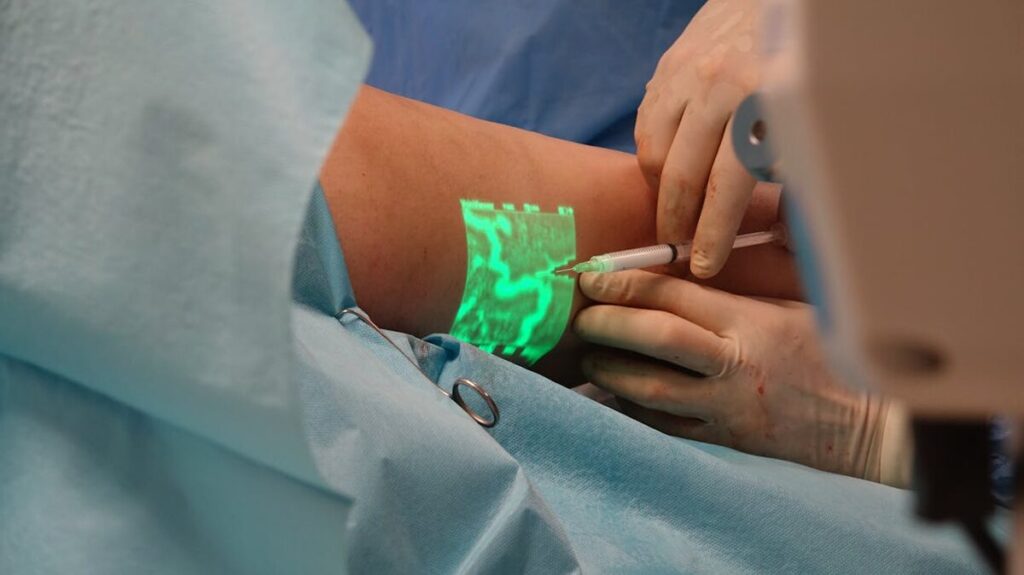Introduction:
Finding veins can be challenging, specifically in patients with slight, severe, or hard-to-locate veins. Suitable lighting plays a crucial role in ensuring accuracy and efficiency during medical procedures. This information explores the best lights for vein detection, their kinds, and their applications to help healthcare professionals make informed choices.
Why Proper Lighting Matters in Vein Detection:
Precisely locating blood vessels is vital to the success of procedures like bloodstream draws, IV placements, and cannulations in healthcare settings. Proper lighting decreases errors, minimizes patient pain, and improves the overall quality of care.
Accurate abnormal vein detection can be challenging throughout pediatric, geriatric, or fat patients. Vein finder signals are designed to enhance vein awareness, making them indispensable tools throughout modern medical practices.
The Role of Vein Finder Lights:
Vein finder signals are specialized devices involving advanced illumination techniques to highlight veins beneath the skin. By simply creating a contrast between blood-filled veins and surrounding damaged tissues, these tools help medical professionals discover veins quickly and proficiently.
These lights are essential for more than just experienced practitioners but for students and trainees who require assistance with vein detection.
Key Benefits of Vein Finder Lights:
- Improved Accuracy: High-quality light ensures precise vein discovery, even in challenging cases.
- Diminished Patient Discomfort: Quick, along with accurate vein access, lowers needle insertion attempts, eliminating patient anxiety.
- Enhanced Productivity: Healthcare professionals can save a moment by focusing on patient care.
- Functional Applications: Suitable for various medical care scenarios, from hospitals to mobile clinics.
Types of Lights for Finding Veins:
The setting, patient demographics, and the specific needs of the procedure determine the best vein finder light.
1. Infrared Vein Finder Lights:
Infrared lights are usually among the most advanced vein diagnosis tools. They work simply by emitting light that permeates the skin and highlights problematic veins filled with hemoglobin, which absorbs infrared light.
- Advantages: Excellent clarity, effective on just about all skin tones, and well-suited for deep veins.
- Applications: Frequent in hospitals and customized clinics.
2. LED-Based Vein Finder Lights:
LED lights are usually favored due to their portability, value, and ease of use. They provide vivid, focused illumination, enhancing line of thinking visibility.
- Advantages: Lightweight, least expensive, and suitable for general use.
- Applications: Ideal for home health-related, mobile units, and basic practitioners.
3. Ultraviolet (UV) Vein Lights:
UV vein lighting is less commonly used but may be effective in specific health-related scenarios. These lights focus on veins by causing those to fluoresce under UV brightness.
- Advantages: Unique visualization approach.
- Considerations: It requires careful management to avoid potential skin damage.
Factors to Consider When Choosing Vein Finder Lights:
Selecting the right vein finder mild involves evaluating key elements:
- Brightness and Contrast: Variable brightness levels allow the unit to adapt to different epidermis tones and lighting problems. Look for a light with high compare for more precise vein creation.
- Portability and Ease of Use: Streamlined, lightweight, and ergonomic units are ideal for busy healthcare authorities who need to move between affected individuals or locations.
- Durability and Battery Life: A durable system with long-lasting battery effectiveness ensures reliability during extensive usage. Rechargeable options are practical for frequent use.
Top Applications of Vein Finder Lights:
Vein finder lights are usually versatile tools with a broad selection of applications.
- Pediatric and Geriatric Care: Children and elderly adults often have veins that are difficult to locate due to tiny or fragile skin. Train of thought finder lights simplify this, ensuring accurate placement with minimal discomfort.
- Emergency Health Services (EMS): Quick, in addition to reliable vein access, is necessary in high-pressure environments, including ambulances or disaster-result units. Vein finder lighting enhances the speed and accuracy of these procedures.
- Aesthetic and Cosmetic Procedures: Cosmetic experts use vein-finder lighting to avoid veins during treatment options such as Botox or filler injections. This reduces the risk of bumps and other complications.
- Oncology and also Dialysis Treatments: For individuals undergoing regular intravenous treatment options, vein finder lights increase the success rate of cannulations and reduce patient stress.
Maintenance and Care Tips for Vein Finder Lights:
To ensure the durability and effectiveness of line of thinking finder lights, proper upkeep is essential:
- Regular Cleaning: Clean the unit after each use using approved disinfectants, maintaining health and preventing infections.
- Risk-free Storage: Store the device inside a protective case in a great, dry place to avoid destruction.
- Battery Management: Check power supply levels frequently and revitalize or replace batteries, seeing that they are needed.
- Software Updates: To get digital or advanced designs, ensure the device software is kept up to date to improve functionality.
Conclusion:
Train of thought finder lights have transformed healthcare by making vein prognosis easier, faster, and more appropriate. These tools enhance the quality of care, reduce patient irritation, and improve the efficiency associated with medical procedures. Whether you do the job in pediatrics, emergency expert services, or cosmetic treatments, paying for the right vein finder light source can significantly benefit your practice. By understanding the forms, applications, and maintenance of train-of-thought finder lights, healthcare authorities can make informed decisions and provide superior care to their affected individuals.
Read also: Rogers Behavioral Health.

